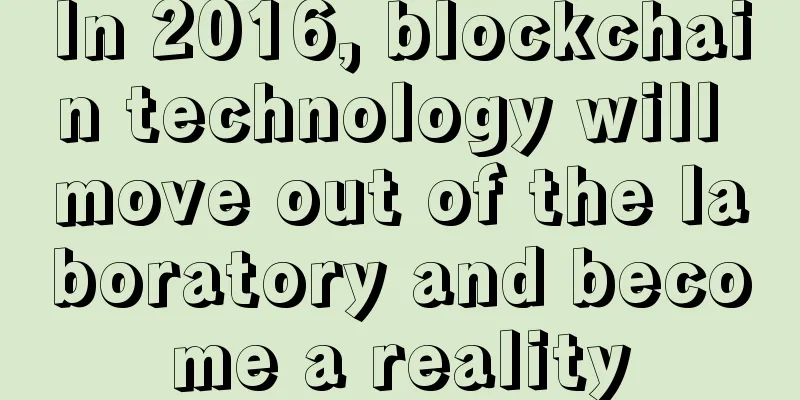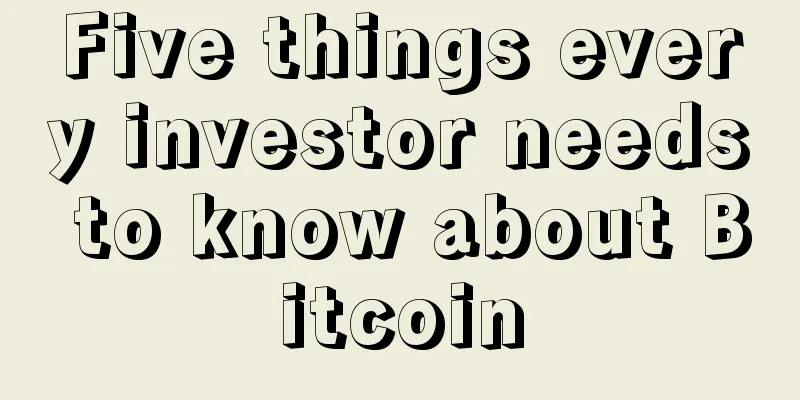In 2016, blockchain technology will move out of the laboratory and become a reality

|
Over the past year, Deloitte’s Global Digital Currency Community (DC3) has been actively working to bring together the firm’s strategy and innovation consulting practices with a growing ecosystem of leading entrepreneurs, scientists, technologists and business leaders around the world. For example, groundbreaking collaborations with organizations such as the World Economic Forum, Singularity University, and the MIT Media Lab’s Digital Currency Initiative. As an industry thought leader, Deloitte aims to provide a forward-looking perspective: What can people hope for blockchain development in 2016? Deloitte surveyed its cryptocurrency community on this question: What do you think will be the biggest breakthrough in the blockchain space in 2016? The results of the survey are shown in the figure below: Based on the detailed results of the survey, Deloitte summarized the development themes of the industry in 2016 into the following three points: 1. Out of the lab 2. The era of consortiums, alliances, and management 3. Next-generation platform The following is a detailed explanation of the above three points Outside the lab2015 was a key year for the development of blockchain. Discussions surrounding blockchain technology were generally positive, with financial institutions and the general public gradually becoming less skeptical and more knowledgeable about it. Respondents believe that 2016 will continue or even accelerate this trend, with many predicting that blockchain prototypes, which have been developed with multi-million dollar investments, will become reality. We hope to see the application of blockchain technology use cases in life, the emergence of new use cases, and more joint products launched by financial institutions and blockchain startups. Deloitte has worked with several large financial institutions in the past to develop multiple blockchain proofs of concept (PoCs). Deloitte expects that many of these tested financial services use cases, such as cross-border payments, trade settlements, loyalty programs, KYC (know your customer), etc., will slowly roll out into full-scale products in 2016. Whether through internal blockchain labs, direct partnerships with blockchain tech companies, or collaborations with platforms such as Deloitte’s own Rubix platform, many major financial institutions are beginning to move from the ideation and “testing the waters” phase to product development. We believe that the full potential of blockchain has not yet been tapped. With the launch of platforms or products such as Augur’s prediction market and Symbiont’s blockchain equity trading platform, we will continue to see thoughtful innovations in the blockchain field, and our experts are very optimistic about the future development of the blockchain industry. The era of consortiums, alliances and managementIn today’s rapidly evolving environment of innovation and solutions, many established companies, startups, groups and regulators are finding that collaboration is key to success in the industry. This trend will only intensify in 2016, with companies likely to leverage the capabilities of alliances to help drive important research and development of new blockchain use cases in specific sectors. One of the most high-profile consortiums is the New York-based R3 blockchain alliance, a large group of more than 40 banks and financial institutions that promotes innovation and the establishment of standards in the financial services sector. In the Internet era, a governing body emerged to create and maintain standards and ensure interoperability. Similarly, in 2016, governance and standards will emerge in the blockchain space, especially for public blockchains. While this may go against the original intention of the technology, it can be a catalyst for widespread adoption. Some companies also look forward to providing customers with "network leadership" in this area, that is, helping to connect different groups in the ecosystem, so that they can come together to share their views and showcase their products. Deloitte is currently playing such a role and is committed to becoming a key player in promoting the development of the blockchain industry. Such cooperation has also been formed at some important conferences, such as Money 20/20, SXSW and the World Economic Forum. Choosing the right groups and partners is also a challenge. Next-generation platformThe final trend predicted by Deloitte experts is next-generation platforms such as Ethereum and interoperable platforms. We are already seeing a lot of interesting use cases combining the power of smart contracts with existing technology trends like the Internet of Things, and we expect these to become operational and available in 2016. An example of this is Slock.it, which is developing an Ethereum computer that shows us the potential of smart contracts and Decentralized Autonomous Organizations (DAOs). Equally important is the rise of interoperable blockchain platforms. As many financial institutions choose to build private federated blockchains, the need for interoperability will grow in the near future. Companies such as Credits recently partnered with the Linux Foundation to create an open source platform, and Deloitte’s Rubix platform partnered with Colu to explore the role of colored coins in interoperability, which are integral to the long-term effectiveness of the technology. Blockchain has the potential to change the infrastructure of financial services. As the technology develops, more use cases will emerge and impact more industries, such as saving costs and creating new revenue. We predict that 2016 will be the year blockchain becomes a reality. Original note: “Deloitte” as used in this article refers to Deloitte Consulting LLP, a subsidiary of Deloitte Touche Tohmatsu Limited. Original article: http://www.coindesk.com/2016-blockchain-reality-deloitte/ |
<<: Bitcoin Tipping Platform ChangeTip Adds GPS-Sensing Payment Function
>>: Bitcoin's elegant upgrade mechanism: miner voting
Recommend
Is it good to have convex eyes? People with convex eyes have bad tempers.
By looking at a person's face, we can obtain ...
What does a man with thick eyebrows and big eyes look like?
In physiognomy, men with thick eyebrows and big e...
The philtrum tells a person's wealth
The philtrum tells a person's wealth 1. Deep ...
Physiognomy guides your career direction
A person's inner emotions will be reflected o...
Is it good to have Tianliang star in the spouse palace?
Feng Shui metaphysics is profound and extensive, ...
How to tell fortune from birthmark on buttocks
The birthmarks on our bodies are just like the mo...
A person who will rise step by step in his career
A person who will rise step by step in his career...
Mole diagram: What do moles on women represent?
Physiognomy has been passed down from ancient tim...
The first shot after 521: What information does Inner Mongolia's "new eight measures" to crack down on mining reveal?
Wu said author | Colin Wu Editor of this issue | ...
How to look at a face with sunken cheekbones
How to look at a face with sunken cheekbones 1. L...
Palmistry Venus Ring Fortune Telling Diagram
1. Introduction to the Ring of Venus <br />...
How to tell whether a woman’s face is blessed?
A blessed woman has certain facial features. So wh...
The fortune of a woman who can change her luck after marriage is particularly good after marriage
Marriage can be said to be a turning point in lif...
What kind of face does a woman have good luck and good fortune?
Judging from a woman's face, she has good for...
What are the main facial features of men who are destined to be prosperous? What are the facial features of men who are destined to be prosperous?
Men with wide and full foreheads are destined to ...









